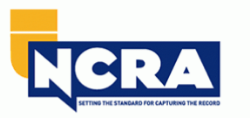Trial Presentation Your Partner for Powerful Evidence Demonstration in Court
Captivate the Jury: Crucial Aspects of a Powerful Test Presentation
Essential elements such as comprehending the audience, crafting an engaging story, and understanding spoken and non-verbal communication are essential elements of a reliable presentation. As these aspects link, they develop a cohesive technique that not only informs however likewise involves jurors on several levels.

Recognizing Your Audience
Comprehending your audience is an essential facet of efficient trial discussion. A successful discussion rests on the capacity to realize the demographics, values, and proneness of jurors. This understanding educates how arguments are mounted, evidence exists, and emotional allures are crafted, making certain that the message resonates with the jurors on a personal degree.
Research suggests that jurors originated from varied backgrounds and might have varying degrees of comprehending pertaining to legal proceedings (trial presentation). Therefore, it is essential to stay clear of lawful jargon that could estrange or confuse them. Instead, using clear, relatable language promotes involvement and understanding. In addition, recognizing the jurors' prospective prejudices and life experiences enables the test speaker to prepare for arguments and address concerns proactively.
Efficient test discussion additionally involves observing jurors' reactions during the process. Engaging with jurors as people rather than a cumulative unit is essential in promoting a solid link in the court.

Crafting a Compelling Story
Crafting an engaging story is important in assisting jurors with the complexities of a case. A well-structured story not just simplifies detailed legal concepts but likewise engages jurors on a psychological degree, making the details more relatable and unforgettable.
This message needs to reverberate with the jurors' worths and experiences, cultivating a connection that goes beyond mere facts. This chronological method can help jurors adhere to the development of occasions, highlighting reason and effect.
Including human aspects-- such as personal tales or stories-- can even more improve the story's influence. These aspects stimulate compassion, allowing jurors to visualize the effects of the instance on actual lives. Furthermore, using a constant motif throughout the presentation strengthens the primary debate, making it simpler for jurors to preserve critical points.
Inevitably, an engaging story changes a trial discussion from a simple address of facts into a convincing tale that mesmerizes the jury, motivating them to deliberate with both factor and feeling.
Utilizing Visual Help
Including aesthetic help right into a trial presentation can considerably boost jurors' understanding and retention of information. Aesthetic products such as charts, diagrams, photographs, and videos can transform complicated lawful ideas and evidence right into easily absorbable styles. By involving numerous senses, these help enable jurors to envision the situation's crucial elements, making it much easier for them to comply with along and comprehend complex information.
In addition, properly designed visual help can emphasize important points and emphasize partnerships in between different items of proof. For example, timelines can efficiently highlight the series of events, while annotated images can make clear specific details pertinent to the instance. This not only aids in understanding yet additionally strengthens the narrative provided by the attorney.
It is necessary, nevertheless, to ensure that visual help matter, clear, and professionally offered. Excessively complicated or chaotic visuals might overwhelm jurors and diminish the message. When made use of sensibly, visual aids offer to match the oral arguments and enhance the overall impact of the trial discussion. Eventually, reliable visual communication can be a powerful tool in convincing jurors and aiding them get to educated verdicts.
Mastering Verbal Communication
Reliable verbal communication is critical in a trial presentation, as it acts as the primary means where navigate to this website lawyers communicate their disagreements and attach with jurors. Mastering this skill involves clarity, persuasion, and engagement. Lawyers need to express their points plainly and briefly, avoiding legal lingo that might puzzle jurors. see here Simpleness in language fosters understanding and assists jurors grasp complicated concerns provided throughout the test.
Moreover, tone and pacing significantly effect how messages are obtained. A positive tone communicates authority, while suitable pacing enables jurors to soak up info without really feeling overwhelmed. Lawyers ought to additionally vary their vocal inflections to highlight crucial points and maintain jurors' rate of interest throughout the discussion.
Furthermore, the organization of spoken debates is important. Structuring the narrative logically and coherently assists jurors follow the attorney's logic, making it simpler for them to preserve important information. Utilizing influential techniques, such as storytelling, can also boost the psychological vibration of the arguments provided, consequently developing a much more profound link with jurors.
Eventually, understanding verbal communication not only enhances a lawyer's instance yet likewise cultivates trust and relationship with the jury, considerably improving the opportunities of a positive decision.

Engaging With Body Movement
Nonverbal communication plays an important duty in test presentations, frequently communicating messages that words alone can not reveal. Body movement, encompassing gestures, posture, faces, and eye contact, substantially affects how jurors regard the reliability and sincerity of the presenter. A positive stance, with shoulders back and an open posture, can infuse depend on, while closed-off body language might recommend defensiveness or unpredictability.

Faces must reflect the emotions connected with the situation, reinforcing the story existing. A sincere expression during a touching minute can generate compassion and reinforce the emotional allure. Ultimately, mastering body language is vital for effective trial presentations, as it boosts spoken communication and establishes an engaging visibility that resonates with the court.
Verdict
Finally, astounding the jury requires a calculated approach that encompasses recognizing the target market, crafting a compelling narrative, using visual aids, understanding verbal communication, and involving through body language. Each element plays an essential function in producing an effective trial discussion that resonates with jurors on both psychological and intellectual levels (trial presentation). By integrating these parts efficiently, lawyers can substantially boost their ability to convince and influence court decision-making